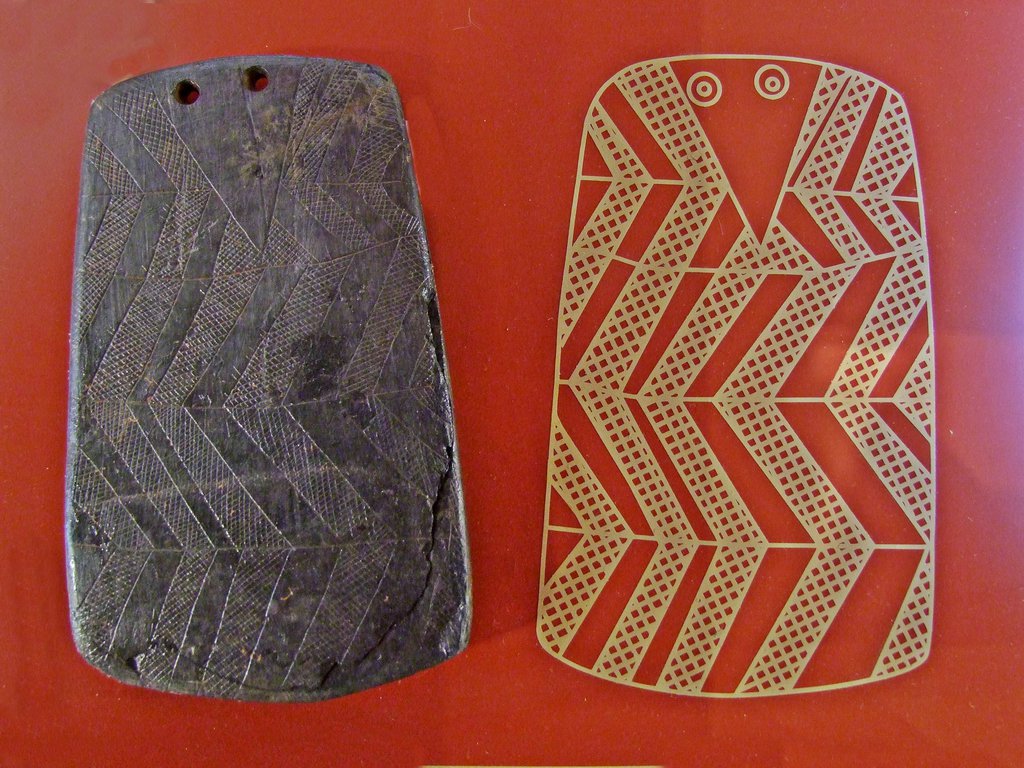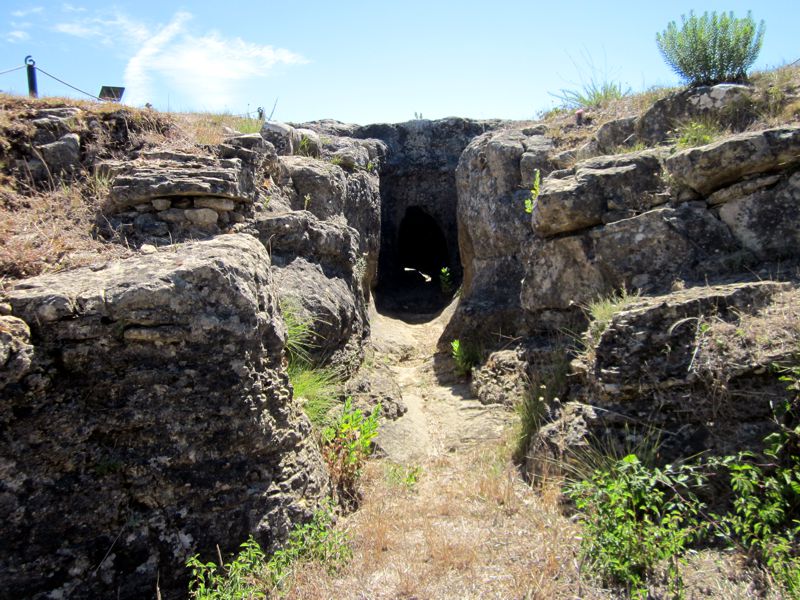<< Feature Articles >> A look at some Museums and Ancient Sites to visit around Lisbon
Submitted by Andy B on Wednesday, 18 April 2018 Page Views: 3872
Neolithic and Bronze AgeCountry: Portugal Distrito: LisboaInternal Links:

The Necrópole de Carenque consists of three collective tombs dug into the limestone outcrops of Tojal de Vila Chã like artificial caves. Their construction dates back to the late Neolithic (3000 BC) when there was already a very developed agricultural economy in the area. Discovered in 1932, they are important in the understanding of Mediterranean prehistory and are a Portuguese national monument.
The Castro de Leceia is a magnificent fortified settlement (castro), again built at the end of the Neolithic period. It was probably occupied for around 1000 years, right up until the Chalcolithic/Copper age. Much of it has been excavated so quite a lot is known about it There is much evidence for farming, with many
 finds of sheep, cow, goat and pig bones, but also millstones and sickles made from flint, and hoes made of stone. Copper fish hooks were also found, suggesting the use of fishing lines. You need to visit with an organised tour, but you can find out more about the settlement at the Fábrica da Pólvora de Barcarena museum in Oeiras, a town very near Lisbon.
finds of sheep, cow, goat and pig bones, but also millstones and sickles made from flint, and hoes made of stone. Copper fish hooks were also found, suggesting the use of fishing lines. You need to visit with an organised tour, but you can find out more about the settlement at the Fábrica da Pólvora de Barcarena museum in Oeiras, a town very near Lisbon.On to some suburban megaliths, the Anta do Monte Abraão and Anta da Estria are both not far, and the Anta de Carcavelos is one of several in the local area, about 20m NW of Lisbon.
It’s quite well preserved due to its quiet location, with five pillars from the chamber still present, and one from the antechamber. Beside it are some some slabs of broken limestone that could
 have been capstones. Arrowheads, decorated pottery and prehistoric jewellery were found in 1994. It is on a hill looking south-west over beautiful limestone outcrops.
have been capstones. Arrowheads, decorated pottery and prehistoric jewellery were found in 1994. It is on a hill looking south-west over beautiful limestone outcrops.
Getting back to the centre of Lisbon, the Museo Geológico is primarily dedicated to geology, as its name suggests, but it also has a large collection of artefacts ranging from early prehistory to Roman times, including some delicate and fascinating stone plaques (pictured top) decorated with engraved patterns which date back to Neolithic times. Follow the link above for more details on our page for the museum.
Looking briefly at some areas of Lisbon to visit, Belém used to be the harbour area, and now has spacious gardens and gorgeous river views. Belém is also the museum district, with many fascinating things in Museu Berardo, Museu dos Coches or in the futuristic MAAT – museum for art, technology and architecture.
 Alfama is a labyrinth of steep cobbled streets, and you can still find hidden gems to visit, like the Museu do Azulejo (Tile Museum) or the bi-weekly flea market of Feira da Ladra. Sitting on the highest hill of Lisbon, the millenium-old Castelo de São Jorge is also worth a visit.
Alfama is a labyrinth of steep cobbled streets, and you can still find hidden gems to visit, like the Museu do Azulejo (Tile Museum) or the bi-weekly flea market of Feira da Ladra. Sitting on the highest hill of Lisbon, the millenium-old Castelo de São Jorge is also worth a visit.If you are taking a trip to Lisbon, or any of the European capital cities, you are likely to need somewhere to store your luggage so you can go off and explore the city unencumbered by all your travel bags. If you get organised you can arrange an online luggage storage service in advance and save yourself a lot of hassle.
For more tips on visiting Lisbon, have a look the Geeky Exporer's recommendations of things to do, and equally as important, things to avoid - written by someone who knows the city very well.
With many thanks to Bak_teria, Magalhaes, Alta-Falisa and BagBnB for their assistance with this article.
<< Prehistoric sites to visit around Innsbruck and the Tyrol, western Austria
Standing stones and other ancient sites to visit in Prague >>



 We would like to know more about this location. Please feel free to add a brief description and any relevant information in your own language.
We would like to know more about this location. Please feel free to add a brief description and any relevant information in your own language. Wir möchten mehr über diese Stätte erfahren. Bitte zögern Sie nicht, eine kurze Beschreibung und relevante Informationen in Deutsch hinzuzufügen.
Wir möchten mehr über diese Stätte erfahren. Bitte zögern Sie nicht, eine kurze Beschreibung und relevante Informationen in Deutsch hinzuzufügen. Nous aimerions en savoir encore un peu sur les lieux. S'il vous plaît n'hesitez pas à ajouter une courte description et tous les renseignements pertinents dans votre propre langue.
Nous aimerions en savoir encore un peu sur les lieux. S'il vous plaît n'hesitez pas à ajouter une courte description et tous les renseignements pertinents dans votre propre langue. Quisieramos informarnos un poco más de las lugares. No dude en añadir una breve descripción y otros datos relevantes en su propio idioma.
Quisieramos informarnos un poco más de las lugares. No dude en añadir una breve descripción y otros datos relevantes en su propio idioma.